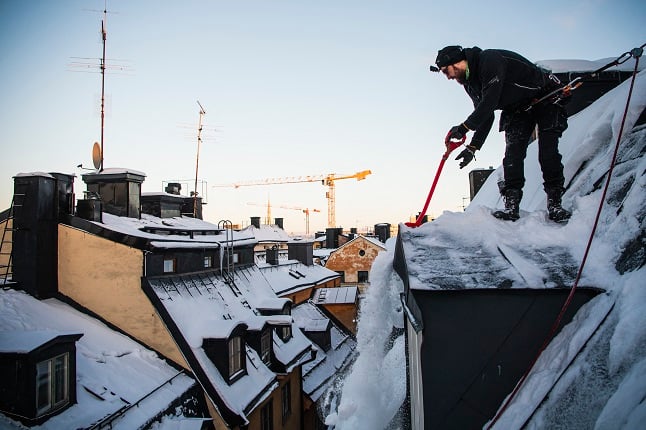Motorists caught without winter tyres struggled to drive on roads after heavy snow fell in central and eastern Switzerland, while record low temperatures were registered in several communities.
Snow accumulations ranged from three to 40 centimetres, with winds on Sunday of more than 100 kilometres an hour in places such as Les Diablerets, a mountain village in the canton of Vaud.
The Swiss capital of Bern was blanketed with 12 centimetres of snow at the weekend, the most recorded in October since 1931, the SDA news agency reported.
Touring Club Suisse received 2,500 calls for help, mostly from people driving vehicles with summer tyres.
The TCS, which offers roadside assistance, said it expected even more calls but advance warnings of the winter weather appeared to be heeded by many motorists.
“The people were warned and they responded well,” a spokesman from TCS told the ATS news service.
All the same, dozens of accidents were reported from Saturday evening and on Sunday — more than 60 in the canton of Bern alone, with another 12 in the canton of Zurich.
Most of the incidents were fender benders with no serious injuries.
A section of the A12 highway in the canton of Fribourg was closed between Châtel-St. Denis and Vaulruz after a pile-up involving eight vehicles.
One person suffered minor injuries and was transported to hospital.
Another accident in Fribourg on the A1 highway near Morat early Sunday afternoon led to tailbacks, while authorities temporarily closed many small roads in the cantons of Vaud and Valais for safety reasons.
Accidents unrelated to the snow snarled traffic on the same motorway between Geneva and Lausanne on Monday morning, causing headaches for commuters.
Meanwhile, a 60-centimetre snowfall forced the closure for two days of a funicular train and the world’s first convertible cable car on the Stanserhorn mountain in the canton of Nidwalden.
The cable car, which began operating in June and allows travellers to stand on an open deck, is expected to be back in service on Tuesday, operators said.
The cable car and the funicular fell victim to electrical problems caused by the heavy snow and ice.
Service on several train lines was disrupted, including those operated by the Montreux-Oberland-Bernois railway and the Fribourg public transport authority.
Strong winds followed the snow in western parts of the country on Sunday.
Geneva’s public transport authority was forced to modify some of its bus routes because of downed trees on roads.
Passengers were transferred from some trams onto buses because of impassable routes, according to press reports.
Among other impacts of the unseasonable weather, the Swiss Football League decided to reschedule a planned match between Young Boys and Lucerne to a later date.
MeteoSwiss, the national weather office, is predicting sunny but cold weather across the country for the remainder of this week.



 Please whitelist us to continue reading.
Please whitelist us to continue reading.
Member comments